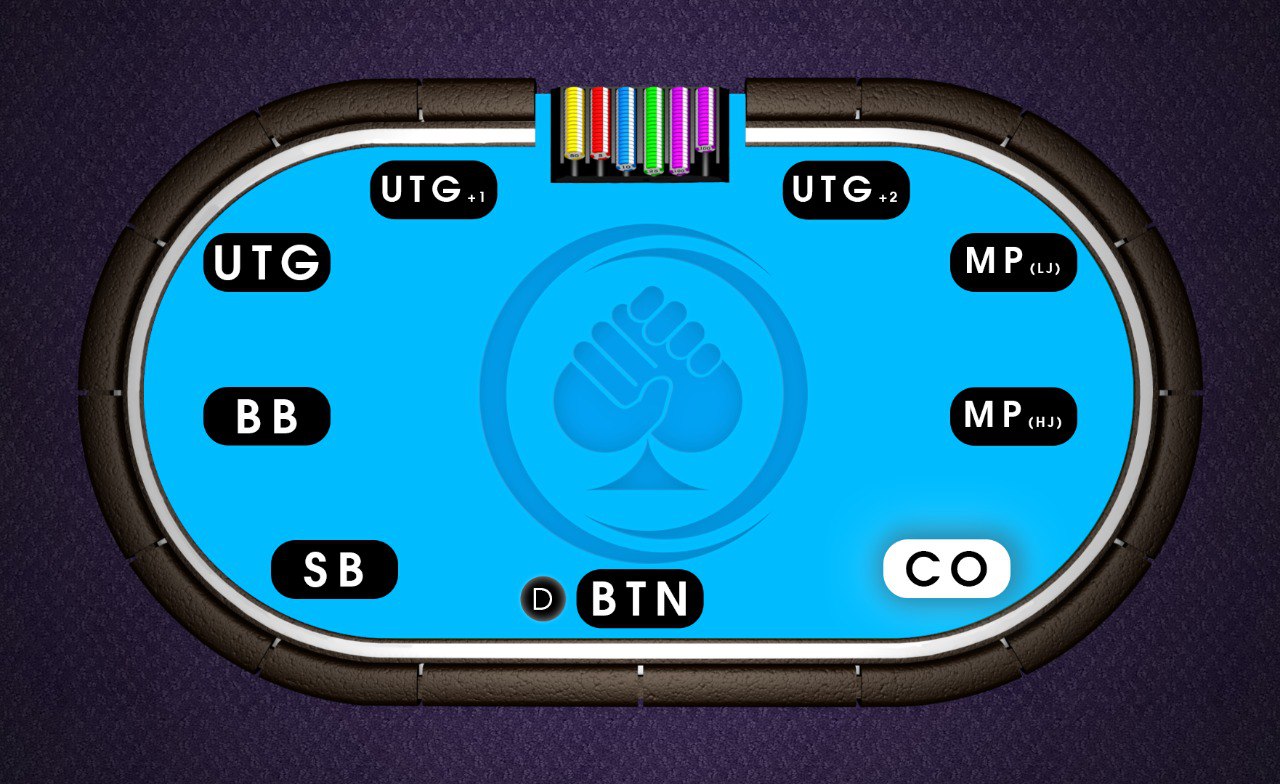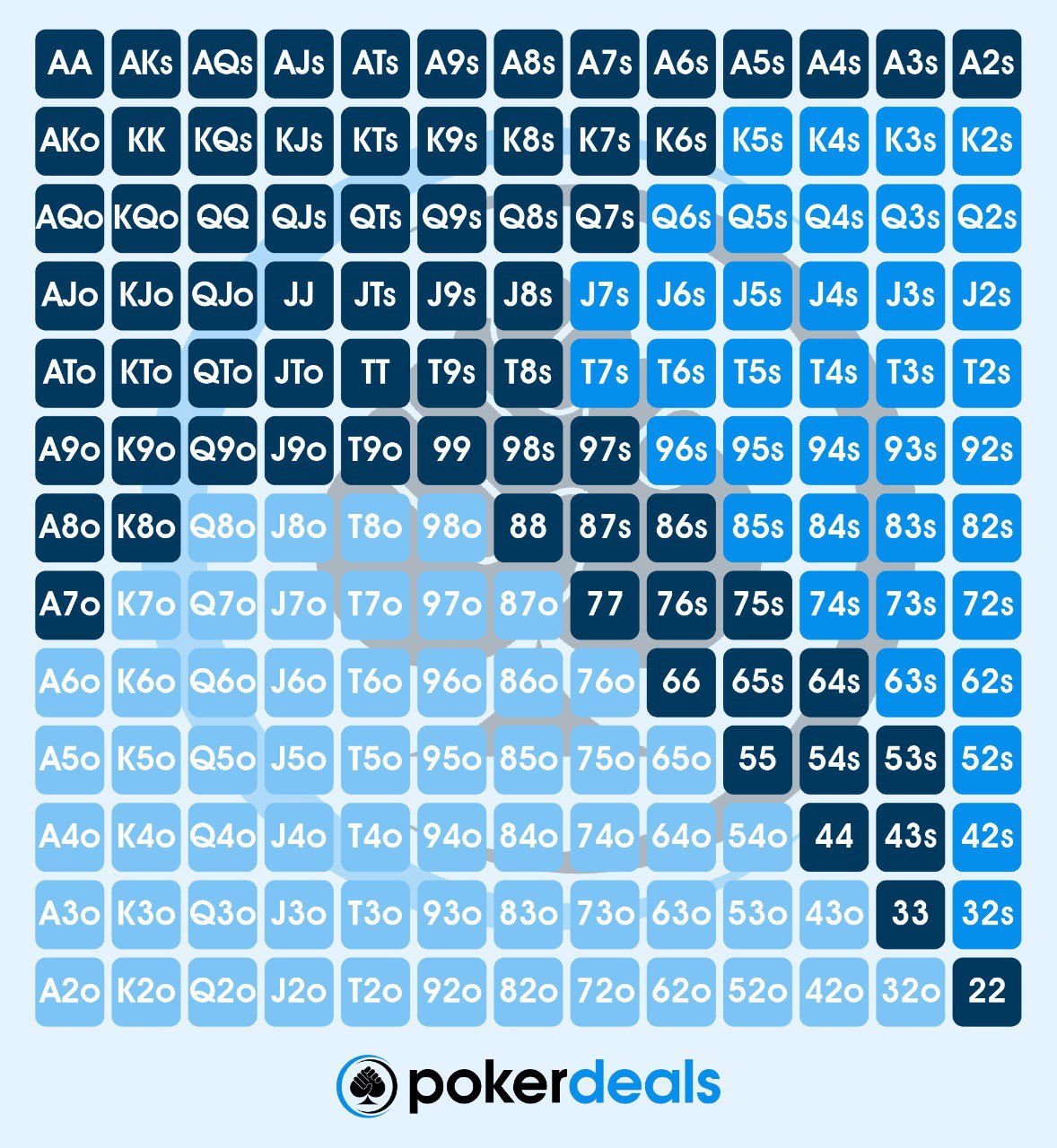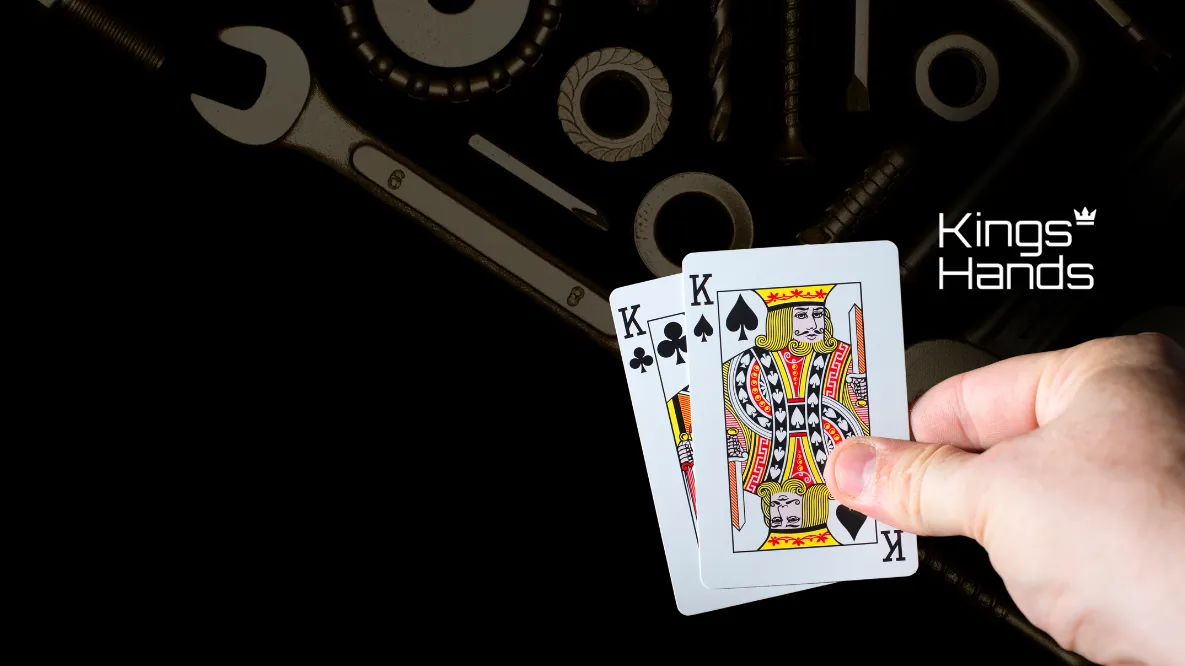We’re finally getting close to the button, and with just one position to go until we get that magic button, we can really start to open up our range.
But, exactly how much should we widen our range, and what are some of the dangers that you’ll face when playing from the Cutoff? We’ll look at all that and more when we take a look at how to construct your CO opening range.
What is the Cutoff Position?
The Cutoff position is the position to the left of the HiJack position and to the right of the Button position. At a nine-handed table, it is the sixth position to act preflop. It is referred to as the “Cutoff” position, as this position used to be described as the “cutoff point” between playing tight and loose.

How Should You Play From the Cutoff?
We’ve broken free from the confining restraints of early position and have firmly arrived into late position, so we can start to widen our range even further in an attempt to steal the blinds. As we’re in late position, our range will be significantly wider than before; the Cutoff is one of the most profitable positions at the table, so we need to take advantage of that.
The main reason why this position is so profitable is our proximity to the button. One of the reasons why we play a tight range of hands from early position is because we’re likely to be out of position preflop, which isn’t a concern when playing from the Cutoff. The closer we are to the button, the more likely we are to be last to act postflop, which means we get an informational advantage over our opponents. Given our informational advantage, we can afford to play a wider range of hands, as we’re better able to play them postflop.
Another reason why we’re able to play a wider range of hands from the Cutoff is because we only have three players left to act after us preflop. With only three players behind us, the likelihood of someone having a strong hand is much lower. Therefore, as we don’t have to be as concerned about someone having a strong hand, we can raise a wider range of hands.
How Do We Construct a Cutoff Opening Range?
In our last article, we mentioned that postflop playability was the reason why we didn’t raise as wide of a range from the HJ as we do from the CO. While that concept is still true of the CO (and is the reason why we don’t play as many hands from the CO as we do from the BTN), that threat is lessened due to our improved postflop position.
Being likely to be in position postflop allows us to increase our opening range from both sides of the matrix, including a lot more hands than we could from the HiJack position. When filling out our ranges, it can be hard to know exactly what kind of hands to include, as we’ve already used all of the traditionally strong hands to make up our other ranges.
If you’re looking to add hands from the suited side of the board, we recommend looking at hands that either make strong flush draws, like suited Kx and Qx, or hands that are connected as well as suited, such as 75s and 86s.
The suited Kx and Qx hands give you a degree of flexibility, as these are hands that can make strong draws as well as decent top pair hands. Remember, we’re not as concerned about our opponents having strong hands from these positions, so if we flop top pair with a hand like K7s, it’s likely going to be good.
On the other hand, suited and connected hands like 75s and 86s give you two shots at flopping a draw, either a straight draw or a flush draw. These are hands that can be played very aggressively postflop, as you have little to no showdown value and have the potential to make a strong hand by the river. Hands like this that regularly flop a lot of equity are good hands to include in your range.
If you’re looking to add hands from the off-suit side of the board, we’d recommend picking the hands that are the most likely to make strong top pair hands. Hands like Ax and Kx go up in value, as they’re more likely to flop top pair and be good at showdown. Connected hands like 76 and 86 go down in value when they’re offsuit, as you’re far less likely to flop a flush draw, and having too many low-value hands in your range will make you unbalanced postflop.
The imbalance will lead to you overbluffing, allowing your opponents to call you down easily, or playing too passive, which allows your opponents to bluff you too often.
Cutoff Base Opening Range
At a nine-handed cash game table with 100bb, we recommend that your baseline Cutoff opening range should look something like this:
34.24% – 22+, A2s+, K6s+, Q7s+, J8s+, T8s+, 97s+, 86s+, 75s+, 64s+, 53s+, 43s, A7o+, K8o+, Q9o+, J9o+, T9o

As you can see, we’ve taken another dramatic step in increasing our range compared to our HJ opening range, with the most dramatic increase coming from the offsuit side of the matrix.
Playing too many offsuit hands from the HJ can be dangerous, as it’s incredibly easy to become unbalanced postflop, allowing our opponents to exploit us. However, as we’re closer to the button when playing from the Cutoff, we get more information on our opponent’s postflop range, allowing us to play more hands without losing EV.
While we’ve added a few more suited hands to our range, the bulk of the increase has come from the offsuit hands, with the inclusion of all off-suit 9x and an extra Ax and Kx hand thrown in as well. These are hands that can make decently-strong top pair hands while retaining some connectivity that allows us to flop strong equity on certain boards.
You’ll notice that we don’t have nearly as many Ax, Kx, and Qx hands as we do on the suited side of the board, and that’s because we’re still concerned with postflop playability, even if it’s to a lesser degree. Having too many of these hands makes us far too unbalanced on certain board textures, allowing our opponents to attack the boards that miss us, and easily get away on boards that are good for us.
This is why we continue to play more hands from the suited side of the board; the fewer combinations of each hand make it easier to remain balanced postflop while still achieving solid board coverage.
Adjusting Your Range
Now that we’re even closer to the button, we should be paying particular attention to the players left to act after us. If we can spot a pattern in their play, we can adjust our preflop ranges to exploit their tendencies, dramatically increasing our win rate.
How You Should Adjust at a Tight Table?
If the three players left to act after you are particularly tight, we’d recommend drastically increasing your preflop raising range to steal the blinds more often. These are the most aggressive positions on the table, so if your opponents are playing too passively, you need to take advantage of that.
The player you need to pay the most attention to is the BTN. If they’re playing too tight against your open raises, you need to take advantage of that and start raising much wider. In fact, we would go as far as to say that you could use your BTN opening range from the CO if the player on the BTN isn’t fighting back against your raises.
The reason we’re most concerned about the player on the BTN is because they’ll have a positional advantage over us postflop, making it much harder for us to realise our EV. If we regularly face a call or a 3bet from the player on the BTN, we can’t afford to raise as wide as we would otherwise like to be.
How You Should Adjust at a Loose Table?
If you’re playing on a loose table, the adjustment in your strategy should be dictated by how they respond to your raises. If they respond passively by calling too often, you should tighten your range and focus on playing hands that have strong postflop playability.
We want our range to have a higher concentration of hands like AK, AQ, AJ, KQ, KJ, etc., as these are hands that are likely going to be dominating our opponent’s calling range. We can also look to include hands that play well multi-way, such as suited connectors that could win a big pot if they make a strong hand against a weak player.
However, if your opponents respond aggressively to raises, we want to tighten our ranges significantly more, as we won’t get the luxury of realising part of our EV when we see a flop. Against opponents who 3bet too often, we want to open a tight range that can mostly continue against a 3bet, and we want to start increasing our 4bet frequency to exploit the fact they re-raise too often.
Summary
As the number of hands in our range increases, the more difficult it becomes to play. Keeping track of such a wide range is incredibly difficult when playing postflop, but due to our proximity to the button, we have an advantage over our opponents that we should be using. That’s why we want to raise a wide range of hands from the CO and exert that advantage over our opponents.
Stay tuned for our next article on preflop opening ranges, where we’ll be covering the Button position, by following us on Facebook and Instagram.





















